In a very short, hand-written autobiography my maternal grandmother provided a historical record of her life. She migrated from Washington, Louisiana—right above Opelousas in St. Landry parish—to New Orleans with her mother and sister. I imagine it was to secure a better education for the two girls. My grandmother wrote that she “moved to New Orleans as a young child, was educated first in public school, then to a private school, then to Tomy Lafon school…attended Straight University then Leland University for two years.” To understand my grandmother’s life better I began researching the schools she attended, especially those institutions of higher learning that were open to people of African descent. For the sake of my own family story, I wanted to know much more about how Straight University came to be and what it had to offer. The story was one of a struggle to survive in very difficult times.
On September 24, 1935, Dillard University opened its doors for the first time. However, ground had been broken for this great institution many years earlier in the histories of New Orleans University and Straight University, the two schools that consolidated to create Dillard. At a time after Reconstruction and during Jim Crow segregation when many blacks were denied a decent education this institution was realized through the cooperation of whites and blacks. This historically black University was named for a noted white philanthropist and educator, James Hardy Dillard. Born to one of Virginia’s oldest families, Dillard was committed firmly to the cause of education for blacks.
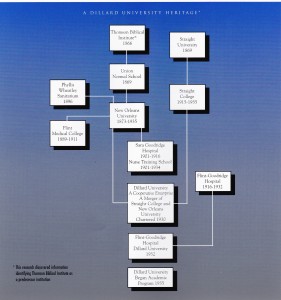
Straight University’s Historical Place in the Development of Dillard University
As early as 1860, even before northern missionaries came south to proselytize former slaves and establish educational institutions for them, “native schools,” founded and run illegally by blacks were in existence. The Methodist Episcopal Church was an early advocate, in the late 1860s, for building and supporting academic institutions for blacks.
On June 12, 1869, Straight University was established by the American Missionary Association (AMA), an agency of the Congregational church. The university was named for the Hon. Seymour Straight a Baptist layman, educator, radical Republican, businessman, philanthropist, New Orleans city council member and opponent of slavery. Straight University and its affiliated institutions were to be free of denominational emphasis. The first building, at Esplanade Avenue and North Derbigny Street, was destroyed by arson in 1877. A new central building, Straight Hall, was erected in 1878 on Canal Street at Tonti.
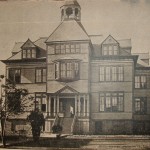
Straight University Central Building, 1892
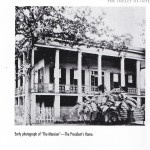
Straight University President’s home “The Mansion”
From the outset, Straight University promoted training in law and medicine. Students who successfully completed the law program were automatically admitted to the Louisiana State Bar without examination. Although both departments were relatively short-lived, the law department in particular produced brilliant and highly distinguished graduates who made their mark on Louisiana and U.S. history. Louis A. Martinet, M.D. (class of 1876) and Rudolphe l. Desdunes, author of Our People and Our History (class of 1882), were founding members of the Comite de Citoyens, established in September 1891. The organization included prominent and, in some cases, wealthy Creoles who fought aggressively against Jim Crow segregation. Their work culminated in the landmark case, Plessy v. Ferguson.
Straight University, which offered a liberal arts education, found it in the interest of its students and community also to emphasize manual education and teacher training. As the failure of Reconstruction and the rise of Jim Crow defined the 1880s, black university graduates found considerably fewer professional career opportunities. In New Orleans, employment for many, many people of African descent generally was confined to domestic and menial labor. As a result, Straight and other schools began actively promoting study in the industrial and domestic arts. (The author’s maternal grandmother got caught up in this change in emphasis as she was a Straight attendee who then went on to study in the New Orleans School of Domestic Science circa 1917; see blog posts “New Orleans Gas Co. Inaugurates School for Training Cooks,” 6/13/2012 and “1918 Graduating Classes of the New Orleans School of Domestic Science,” 7/23/2012).
We in the present day must be careful and thoughtful in ascribing our ideas of education on the time after Reconstruction for, although labeled a university, many of the classes taught were at the high school or pre-college level or below. This is evidenced by language on page 6 of the Straight University Catalogue, 1870 – 1871: “NOTE — Advanced pupils in the Normal Department are appointed to assist in the Elementary Department as occasion requires, thus securing the advantages of the Practice as well as the Theory of teaching.” Even so, by 1873 blacks had secured the right to train for and practice both law and medicine in the state of Louisiana.
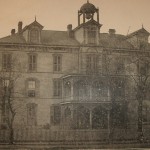
Straight University’s Whitten Hall female dormitory 1883
In 1870 the University consisted of the Theological Department (13 students), Law (18 students), Normal (69), Commercial (51), Academical [sic] (189), and Elementary Departments (714). In the Normal Department the objective was to educate teachers. Straight’s commercial department was organized to furnish opportunities for a thorough business education to students who looked forward to some business employment. The Academical Department was especially designed to prepare students for college but was also adapted for those who desired a thorough English education. Classes in the Academical Department’s first year included English and Latin grammar. The second year included English and Latin (Caesar, Virgil, grammar) and Greek. The third year included English, Latin (Virgil, Cicero, grammar) and Greek (Anabasis, Homer’s Iliad). It was noted that instruction was given in French and, whenever necessary, a class in Spanish would be organized. The Elementary Department was temporarily organized to furnish instruction to the large class of people who had no basic education. Many of these were adults. Straight University had a separate Medical Department. Matriculation cost $1 per month for each Department except the Normal and Theological Departments which were defrayed by “benevolent gentlemen.”
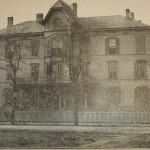
Straight University’s Stone Hall male dormitory 1883
The lack of professional opportunities for black students was not the only dilemma facing the faculty and trustees of Straight University. When the new century rolled around financial worries plagued the instituion as well as its counterpart, New Orleans University. These problems were exacerbated by a stagnant Southern economy, the turmoil of World War I and widespread violence against blacks. Aware that conditions were deteriorating for blacks in the south, northern philanthropic organizations began to ponder the fate of these two different, yet similar, institutions. In 1914 and 1915, Dr. Thomas Jesse Jones visited Straight University and New Orleans University in connection with his study of black education in the United States, under the supervision of the Bureau of Education, Department of the Interior, and in cooperation with the Phelps-Stokes Fund. He realized, as did Dr. Frederick Brownlee of the AMA in 1920, that each institution was hampered by a lack of facilities and money anat both would benefit from a merger of interests.
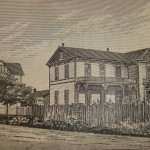
Straight University’s Daniel Hand Prep School 1883
In March 1928 President James P. O’Brien of Straight College–reclassified from its university status after losing the theology department in 1905–wrote to Edgar B. Stern, a wealthy New Orleans cotton broker, asking for help to raise five hundred dollars for the college. His appeal to Stern led to the involvement of several of the nation’s largest philanthropic concerns. The Julius Rosenwald Fund of Chicago and the General Education Board of New York, as well as a number of prominent New Orleans citizens, pledged to support the two universities if they agreed to consolidate. Dillard University was the result.
NOTE: To assist our readers who are looking for more detailed information on Straight University in Catalogues available at the Dillard University archive, the following list is provided:
1) Catalogue 1908 – 1909 describes all of the school levels, pgs. 10-20
2) Catalogue 1909 – 1910 lists the Alumni from 1876, pgs. 48-56
3) Catalogue 1910 –1911 explains “The Normal Course,” pg. 16/picture of The Glee Club, facing pg. 49/The Alumni from 1876, pgs. 54-65
4) Catalogues 1911 – 1912 and 1912 – 1913 are missing
5) Catalogue 1913 – 1914 provides a history including the new address at 2408-2436 Canal Street and discusses the Domestic Science Department
6) Catalogue 1915 – 1916 provides an inclusive Alumni section from 1876 beginning on pg. 91
Sources: “A History of Beaulah Igy-Jones Life,” 1960, private collection of the author;“Within These Walls, A Short History of Dillard University,” Dillard University Office of the President; Straight University Catalogue 1870-1871, archive.org (1870-71, 1883-84. 1891-92 catalogues available online); American Missionary Association Archives, Addendum, Records 1858 – 1991, Amistad Research Center
Photographs courtesy “Within These Walls, A Short History of Dillard University”
L. Gobert
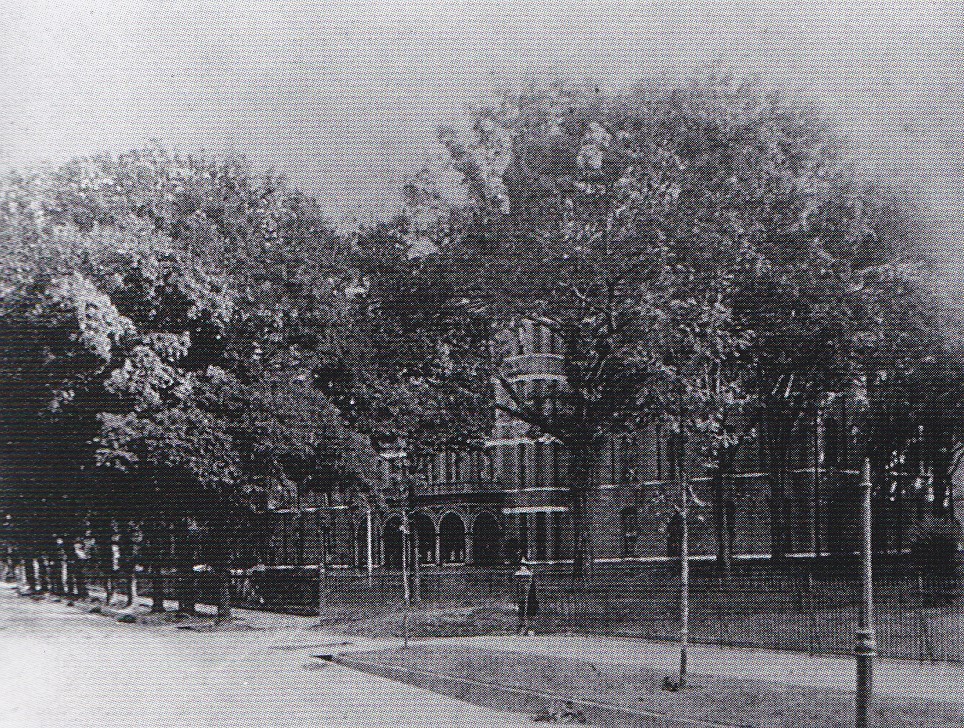



James D. Anderson adds in his seminal work, “The Education of Blacks in the South, 1865-1930”
“Those institutions supported by the various religious denominations continued to regard academic or literary education as the most important facet of their work and strongly objected to the notion that academic subjects should be subordinated or correlated to industrial training. In 1900 the American Missionary Association supported five major black colleges-Fisk, Talladega, Tougaloo, Straight, and Tillotson-along with forty-three normal schools for black youth.” (134-135)
This is most informative. I applaud you on your diligent research!
Thank you Clemon. Makes me even more motivated when I know one of my ancestors was associated.
My mother and father did not come to New Orleans until 1940. through the years I met many people who spoke of attending Straight, When I asked my parents and aunts and uncles about Straight they never could give me any information. Your research and the publication of CreoleGen are so enlightening. I no longer live in New Orleans and regret not pursuing questions about the history that you are now providing while I was there. Thank you for this important work I am so happy to receive it. Jacqueline Grooms James.
I wonder if Straight Business School has any relationship with Straight University? Thank you for the information!
Hi Dawn, The Straight Business School was a separate institute from Straight University. It was started by Lucien Alexis Sr, principal of McDonogh #35, after he retired from the school system in the 1950s. It was located at 1234 North Claiborne Avenue. His wife, Rita Holt Alexis, was the one credited with running the school and their son Lucien Alexis Jr. took it over afterwards. For more on Mr. Alexis read “The Negro Einstein”. I am planning to publish an article on their son, Lucien Alexis Jr.,in the near future.
That makes sense. My grandparents were both graduates of McDonough #35. Thanks for the info!
Hi Lolita,
I am not the owner of 1234 North Claiborne Ave. I’m trying to get historical information about The Straight University when it was located on the property. Can you please contact me at your earliest convenience. My email address is patrice@dangerfieldandassociates.com and my business phone number is 504-304-1060. Looking forward to hearing from you.
Thank You,
A. Patrice Dangerfield
While researching my roots I discovered that my grand father was a student at the Flint Medical school. He graduated in 1906. My grand mother was a teacher at either Straight or New Orleans University around the same time. Does anyone know how I can get archival info about past students and faculty?
It is after midnight but I just can’t stop reading your research on so many things I heard about as I grew up in this city. My aunt, Emma Coffey Blond attended Straight Univ. and my father James J. Gardner and my mother Ruth Turner Green Gardner attended New Orleans Univ. If you have already published an article on NOU, would you tell me where to find it? Thanks.
Are the catalogs for Straight University during the 1870s available? I’ve found 1870/1871 online but that’s the only one I’ve been able to find.
The 19th century catalogs for Straight University available online are 1870-71, 1881-82, 1883-84, and 1891-92. The catalogs, as you know, simply give the students’ names and addresses and the list of faculty members.
My great-great-grandmother attended Straight University. She died around about 1910.